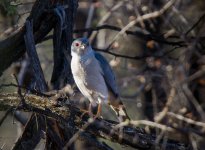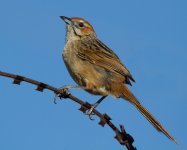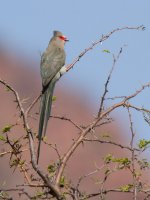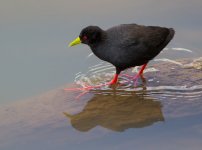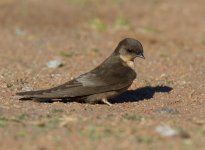Bananafishbones
Incoherently Rambling .....

Tuli Botswana
From Mapungubwe we drive to the Platjan Border Post, where we are picked up for our stay in the Kwa Tulu Private Game Reserve in Botswana, in a small tented camp on an island in the Limpopo river. No electricity, no cell phone coverage, but a feeling of being truly out in the bush. There is only one game drive vehicle, so when the 4 young Americans already staying there deccide they want to do a walk with the ranger in the morning, we ask if he can drop us off first at a hide in the reserve. We spend a couple of hours there, with no-one else around for miles. Elephants, kudus, and impalas come to drink at the artificial waterhole and quite unexpectedly, a leopard shows up for a drink, too. A magical moment. Birds around the hide include: Cinnamon- and Golden-breasted Bunting, Blue Waxbill, Namaqua Dove, Cape Starling, Lilac-breasted Roller, Red-billed Quelea, Southern Grey-headed Sparrow, Ostrich and Red-billed Buffalo-weaver.
At the camp we see Brown-hooded Kingfisher, Pied KIngfisher, Black-headed Oriole, Blacksmith Lapwing, White-backed Vulture, Black Stork, Arrow-marked Babbler, Green Woodhoopoe, Crested Barbet, Lilac-breasted Roller, Broad-billed Roller, Grey Go-away Bird, Meve's Starling, Dark-capped Bulbul, Groundscraper Thrush, Black-backed Puffback.
On the game-drives we see a leopard three more times, so an amazing total of four sightings in four days. Further birds on the game drives include: Gabar Goshawk, Kori Bustard (even in flight, which is a magnificent sight) Verreaux's Eagle, Spotted Eagle Owl, African Fish Eagle, Martial Eagle, African Hawk Eagle, Brown Snake-eagle, Dark Chanting Goshawk, Little Bee-eater, White-fronted Bee-eater, European Bee-eater, Purple Roller and Namaqua Sandgrouse.
1. Leopard
2. African Hawk Eagle
3. Purple Roller
4. Kori Bustard in flight
5. Golden-breasted Bunting
5 incredible species depicted here Peter, wonderful. :t:





